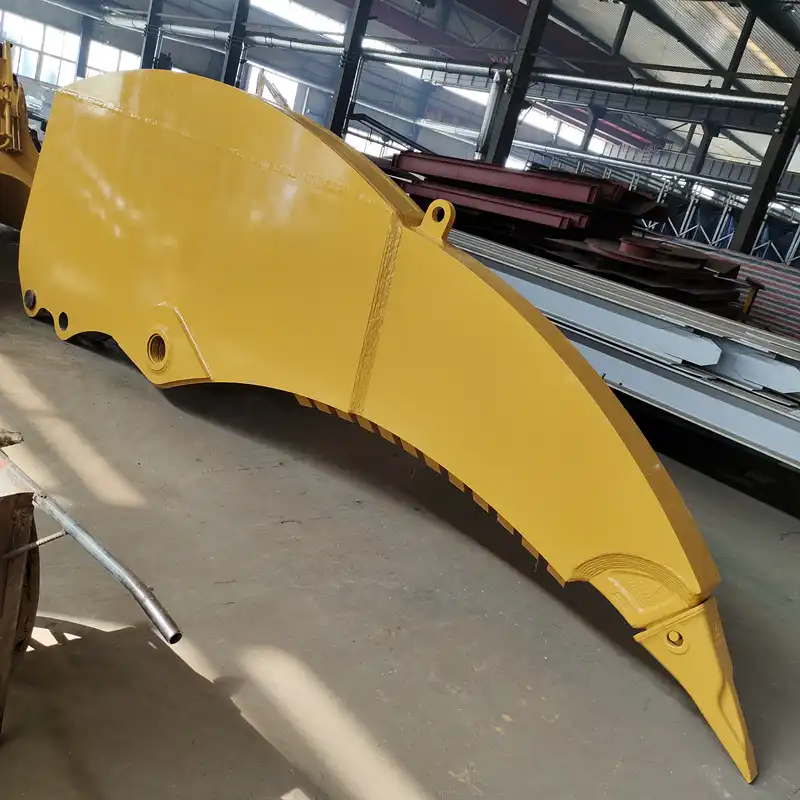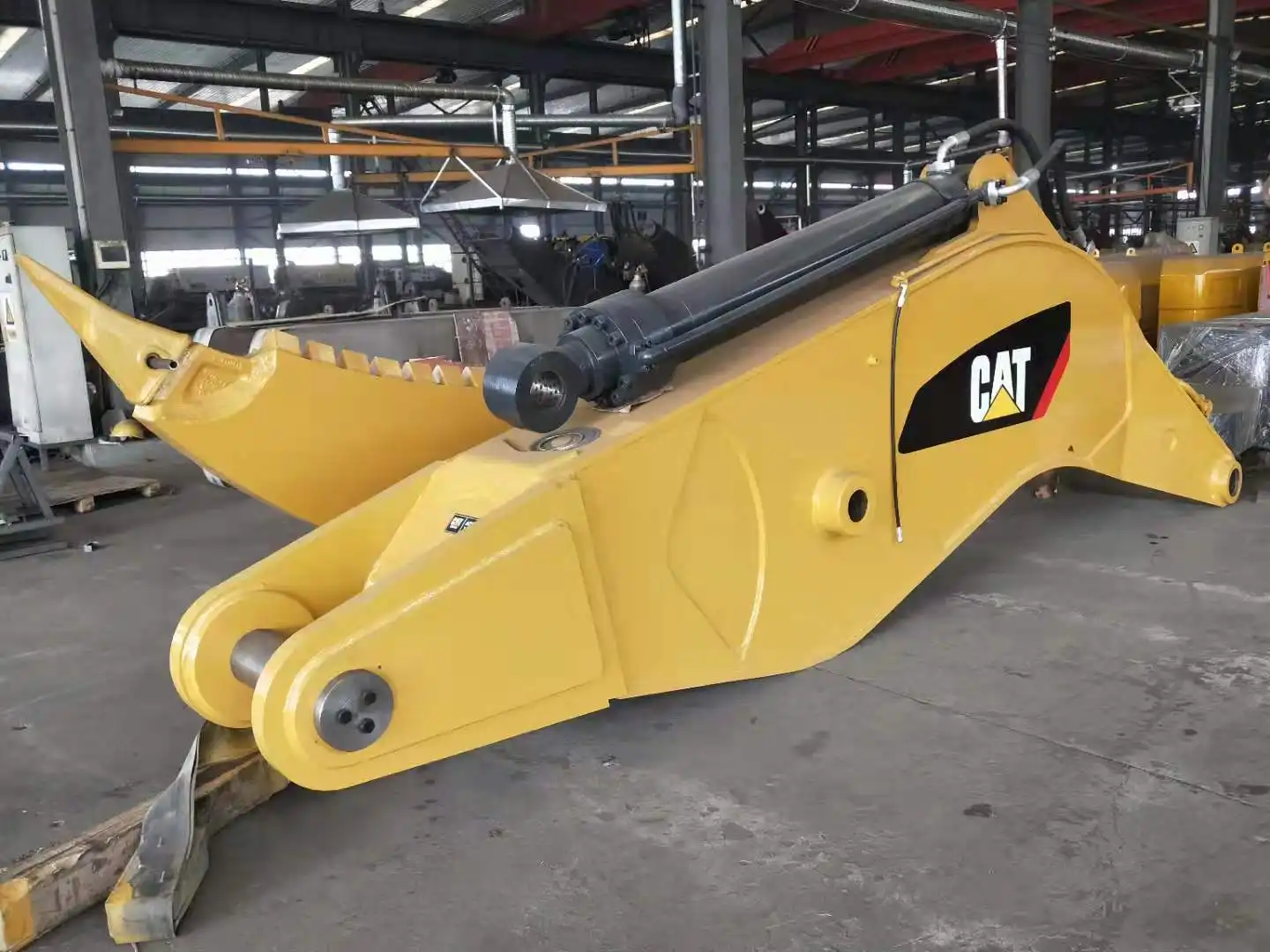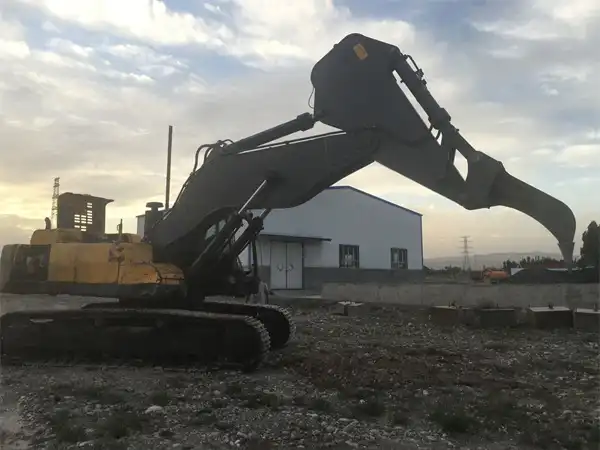How to measure excavator rock arm?
Measuring an excavator rock arm accurately is crucial for construction professionals, mining operators, and demolition contractors who need to ensure proper equipment compatibility and optimal performance. The process involves measuring specific dimensions including the maximum operating range, operating radius, transport height, cylinder specifications, arm lengths, and attachment points. Understanding these measurements helps determine whether a rock arm will fit your excavator model and meet your project requirements. Whether you're replacing an existing arm or upgrading to a more powerful rock breaking solution, proper measurement ensures seamless installation and maximum operational efficiency for challenging rock excavation tasks.

Identify Key Components to Measure
Before diving into the actual measurement process, understanding the essential components of an excavator rock arm becomes your foundation for accurate assessment. These specialized attachments differ significantly from standard excavator arms due to their reinforced construction and enhanced breaking capabilities.
Upper Arm Structure and Specifications
The upper arm represents the primary structural element that connects directly to your excavator's main body. This component bears the majority of operational stress during rock breaking activities. When examining the upper arm, you'll notice its robust construction featuring thicker steel plates and additional reinforcement ribs compared to standard arms. The connection points require precise measurement to ensure compatibility with your excavator's mounting system. Pay particular attention to the hydraulic cylinder mounting brackets, as these determine the arm's lifting capacity and operational range.
Forearm Design and Working Length
The forearm section houses the primary breaking mechanism and determines your equipment's reach capabilities. This component typically features a shortened design compared to standard excavator arms, concentrating power and improving breaking efficiency. The working length directly impacts your ability to reach target areas while maintaining optimal breaking force. Understanding this measurement helps predict job site performance and operational limitations.
Hydraulic System Components
Hydraulic cylinders represent the powerhouse of any rock arm system. These components require careful measurement to ensure proper hydraulic flow rates and pressure compatibility with your excavator's system. The cylinder inner diameter and piston rod specifications determine the arm's lifting capacity and breaking force. Mismatched hydraulic components can lead to poor performance or potential system damage.

Define Reference Points
Establishing accurate reference points ensures consistent and reliable measurements across different rock arm configurations. These reference points serve as your measurement baseline and help maintain precision throughout the assessment process.
Excavator Mounting Interface
The mounting interface represents your primary reference point for all subsequent measurements. This connection point between the excavator body and the excavator rock arm must align perfectly to ensure proper operation. Locate the pivot pin centerline, which serves as your zero reference for measuring operating ranges and reach capabilities. The mounting bracket dimensions and bolt patterns require precise documentation to verify compatibility with your specific excavator model.
Operational Center Points
Identifying the operational center points helps determine the arm's working envelope and reach capabilities. The boom pivot point establishes your reference for measuring maximum operating radius and vertical reach. The stick pivot point affects your equipment's digging depth and horizontal reach. These reference points remain consistent regardless of the arm's position, providing reliable measurement baselines.
Ground Level Reference
Establishing a ground level reference point ensures accurate measurement of transport height and operational clearances. This reference helps determine whether your rock arm configuration meets transportation regulations and job site access requirements. Mark your reference point clearly and ensure all team members understand its location to maintain measurement consistency.

Measurements
Now that you've identified components and established reference points, the actual measurement process requires systematic attention to detail and proper tools.
Operating Range and Radius Measurements
Measuring the maximum operating range involves extending the arm to its fullest horizontal position and recording the distance from your mounting reference point. This measurement determines your equipment's reach capability for accessing rock formations and working areas. The operating radius measurement captures the maximum distance your rock arm can reach when fully extended at various angles. These measurements directly impact your job site planning and operational efficiency.
Document these measurements carefully, as they determine your equipment's working envelope. Consider that excavator rock arm configurations typically offer different ranges depending on the model size and design specifications.
Physical Dimension Assessment
Transport height measurement proves critical for transportation planning and job site access. Measure from your ground reference point to the highest point of the arm when positioned for transport. This dimension must comply with transportation regulations and clearance requirements for bridges and overpasses.
Upper excavator rock arm length measurement starts from the mounting pivot point and extends to the forearm connection point. This dimension affects your equipment's leverage and breaking force capabilities. Working length of the forearm measures from the upper arm connection to the attachment point, determining your reach and operational flexibility.
Hydraulic Component Specifications
Cylinder inner diameter measurement requires careful attention to ensure hydraulic compatibility. Use precision measuring tools to record the internal bore diameter, as this specification determines hydraulic flow requirements and pressure ratings. Piston rod diameter measurement affects the cylinder's strength and operational capacity.
These hydraulic measurements must match your excavator's hydraulic system specifications to ensure optimal performance and prevent damage. Mismatched hydraulic components can result in poor performance or costly repairs.
FAQ
①What tools do I need to measure an excavator rock arm?
You'll need a steel measuring tape, digital calipers for precision measurements, a level for reference points, and potentially a laser measurement device for longer distances. Having a helper makes the process more accurate and efficient.
②How often should I measure my rock arm for wear?
Regular measurement every 500-1000 operating hours helps identify wear patterns and potential issues. Focus on pivot points, cylinder specifications, and overall dimensions to track changes over time.
③Can I use the same measurements for different excavator models?
No, each excavator model requires specific measurements due to different mounting systems, hydraulic specifications, and operational requirements. Always measure for your specific equipment model.
④What's the difference between measuring a rock arm versus a standard arm?
Rock arms typically have shorter dimensions but heavier construction. The measurement points remain similar, but the specifications differ significantly due to the specialized design for rock breaking applications.
⑤How do I ensure measurement accuracy?
Use calibrated measuring tools, establish clear reference points, take multiple measurements, and document everything. Having a second person verify measurements helps prevent errors.
Are you ready to take your excavation operations to the next level? Look no further than Tiannuo's Excavator Rock Arm, engineered for maximum efficiency and versatility. With a maximum operating range spanning 6300 mm, 7400 mm, and an impressive 7600 mm, our rock arm can reach into the most challenging terrains. The maximum operating radius of 7100 mm, 7900 mm, and 8100 mm ensures that you can work in tight spaces without compromising on power or precision.
When it comes to transport, our rock arm is designed for convenience. The transport height options of 3870 mm, 4320 mm, and 4730 mm make it easy to move your equipment from one site to another without any hassle. And with cylinder inner diameters ranging from 200 mm to 3670 mm and piston rod diameters from 140 mm to 3100 mm, you can choose the perfect configuration to match your specific needs.
The upper arm lengths of 5100 mm, 6020 mm, and 7100 mm, combined with forearm working lengths of 1400 mm, 1600 mm, and 1700 mm, provide unparalleled flexibility and control. Whether you're working on a large-scale construction project or a smaller, more intricate site, our rock arm can adapt to your requirements.
But what truly sets Tiannuo's Excavator Rock Arm apart is its soil loosening capabilities. With teeth options like D11, D12, and D12, you can effortlessly break through even the toughest soil and rock formations. This feature not only saves time but also reduces wear and tear on your equipment, ensuring a longer lifespan and lower maintenance costs.
Whether you need detailed specifications or professional guidance on measuring techniques, our experienced team stands ready to assist with your equipment needs. Contact us at tn@stnd-machinery.com to discover how our precision-engineered rock arms can enhance your operational capabilities.
References
- Construction Equipment Measurement Standards and Procedures Manual, International Association of Construction Equipment Manufacturers, 2023.
- Hydraulic Excavator Attachment Specifications and Compatibility Guidelines, Heavy Equipment Engineering Journal, Volume 45, 2024.
- Rock Breaking Equipment Design and Measurement Protocols, Mining Industry Technical Review, Issue 12, 2023.
- Excavator Arm Measurement Techniques for Construction Applications, Construction Machinery Quarterly, Winter Edition, 2024.
- Heavy Equipment Transportation Dimension Requirements and Compliance Guide, Transportation Safety Institute Publications, 2023.
About Author: Arm
Arm is a leading expert in the field of specialized construction and railway maintenance equipment, working at Tiannuo Company. Tiannuo specializes in manufacturing a wide range of products, including railway maintenance equipment like railway sleeper changing machines and screening machines, excavator modification equipment such as excavator lifting cabs, various engineering arms for excavators, excavator accessories like digging buckets, and engineering vehicle auxiliary equipment like loader buckets.

